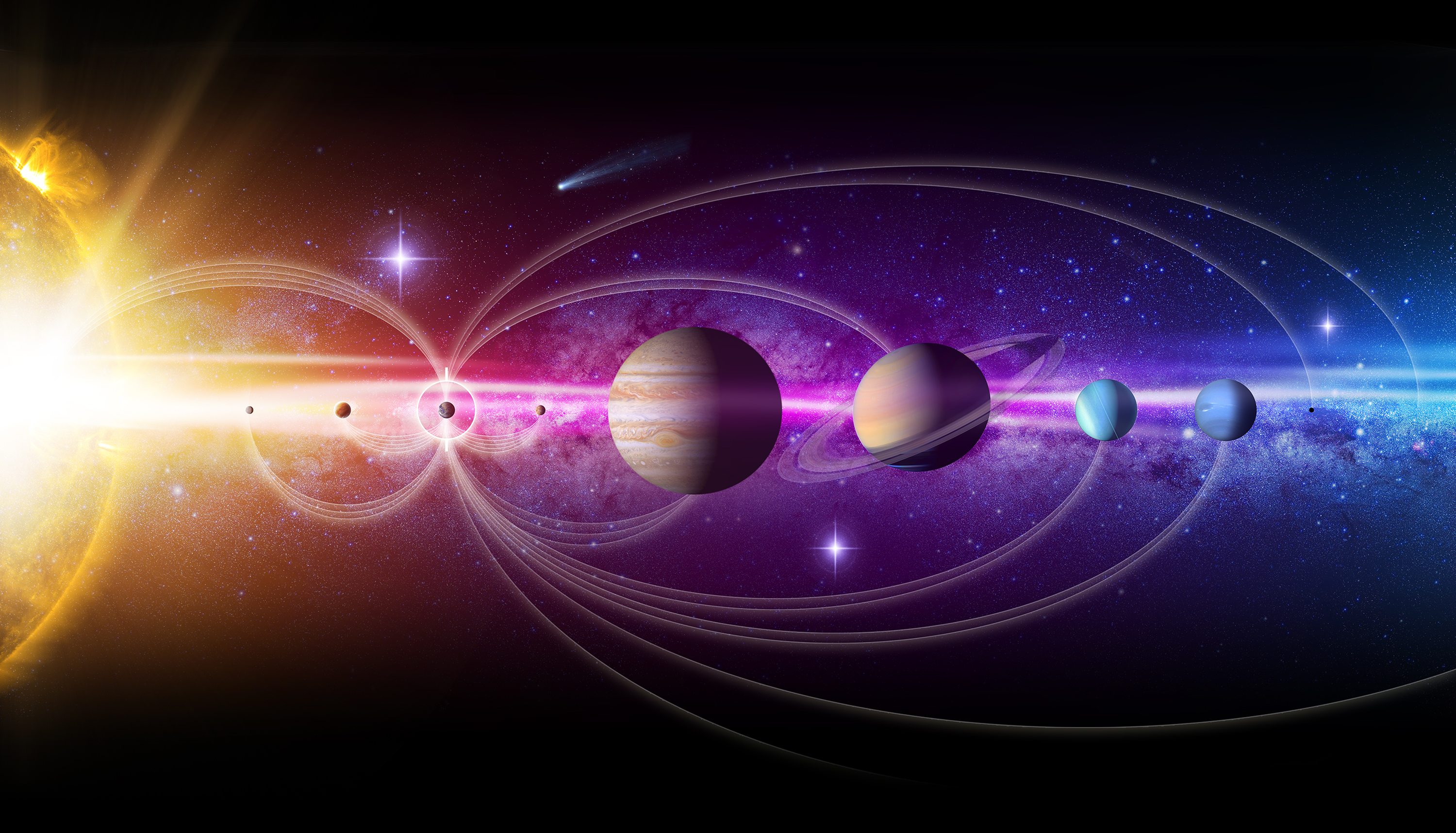What could a space telescope just for solar system science do?

To date, planetary scientists have built spacecraft and astrophysicists have built space telescopes. But the time has come to change that, some solar system researchers say.
Astrophysics space telescopes, particularly the venerable Hubble Space Telescope, have been vital tools for science right here in our solar system and far beyond. But there's only so much science you can do with a borrowed telescope, planetary scientists find, particularly with one as in-demand Hubble, for instance.
"We really haven't had a dedicated solar system space telescope, we have relied on astrophysics assets — which are great, they've made critical contributions to solar system science," Amanda Hendrix, a planetary scientist at the Planetary Science Institute, said during a virtual meeting of the Outer Planets Advisory Group held on Sept. 3. "But we're ready for the next steps."
Related: The Hubble Space Telescope and 30 years that transformed our view of the universe
While such an instrument wouldn't chart a course to a specific target, that doesn't mean it couldn't help such missions in the future, Hendrix said. She cited, in particular, Hubble Space Telescope observations of what became an additional New Horizons target, Arrokoth, which wasn't discovered until after the spacecraft had launched, as precedent.
"Space telescopes have synergy with visiting missions, so they can help with planning new missions, enhance the science return of targeted missions with complementary observations, identify targets and hazards, and extend the studies of the variability beyond the mission lifetimes," Hendrix said.
Among astrophysics observatories, Hubble has made particularly important contributions to planetary science, Hendrix said, particularly in studying storms and auroras on Jupiter, looking for plumes on its moon Europa and identifying new Kuiper Belt objects like Arrokoth.
Get the Space.com Newsletter
Breaking space news, the latest updates on rocket launches, skywatching events and more!
But Hubble won't last forever, and the next two major astrophysics space telescopes, the Webb and Roman telescopes, won't be able to see ultraviolet light, which is particularly important for planetary scientists.
And there's a bigger problem with relying on astrophysics observatories, Hendrix said. Because these instruments are in such high demand and their coordinators often schedule observing time in yearly cycles, it's difficult for planetary scientists to get the sort of long-term, high-frequency observations that are particularly vital for their work.
That type of observation is vital for studying rapidly-changing phenomena: If you want to study plumes or volcanos or storms or auroras, an observation here or there simply isn't going to cut it.
Many of the pressing questions in modern planetary science require seeing brief phenomena or changes over time. Does Venus have active volcanos? How do those on Jupiter's moon Io work? Which icy moons shoot plumes from interior oceans out into space, making them easier to study? How do comets change? How do planetary rings form and persist? How does the constant stream of charged particles flowing off our sun interact with magnetic fields at each planet?
And unlike a new mission to visit these worlds, a single space telescope could tackle a buffet of these questions at a whole range of locations.
"There's so much science that needs to be done, and in fact, can only be done by a facility geared to observing targets from a distance," Hendrix said. "There's a lot of science to be done by not going to a particular destination in the solar system."
Email Meghan Bartels at mbartels@space.com or follow her on Twitter @meghanbartels. Follow us on Twitter @Spacedotcom and on Facebook.
Join our Space Forums to keep talking space on the latest missions, night sky and more! And if you have a news tip, correction or comment, let us know at: community@space.com.

Meghan is a senior writer at Space.com and has more than five years' experience as a science journalist based in New York City. She joined Space.com in July 2018, with previous writing published in outlets including Newsweek and Audubon. Meghan earned an MA in science journalism from New York University and a BA in classics from Georgetown University, and in her free time she enjoys reading and visiting museums. Follow her on Twitter at @meghanbartels.
-
Nerdstrom The National Reconnaissance Office (NRO) donated two space telescope to NASA in 2012. One is being refurbished and re-engineered into the Nancy Roman Telescope. AFAIK there are no plans for the second piece of hardware. NASA sponsored a workshop for planning for a use for it (https://science.nasa.gov/salso/post-workshop-updates/), but there has been no updates since 2013.Reply
Perhaps NASA install a NIR/visible/NUV camera and a spectrograph on it, and launch it on a Falcon 9 or Falcon Heavy for a solar system telescope?









